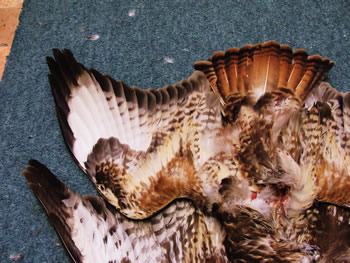Great, frog spawn has appeared once again in the pond that I built at the Bournemouth Natural Science Society garden, much more than last year, the product of at least ten females, which may mean that there are over thirty and up to fifty frogs that have been busy. There are always at least twice as many males to females, and at times in some colonies, one female to half a dozen males. This may seem unfair but it is very fair as it allows for competition, jousting out the weaker males and ensuring that the stronger survive to spread their genes. The pond is now in its third year and already sports an array of wild species including three species of damselfly, one dragonfly, common toads and palmate newts, diving beetles and many more invertebrates.
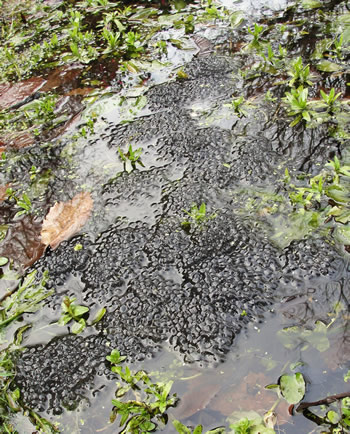 Now for the pie part! I am rather partial to frogs in stir fry but not in a pie, sometimes many get killed on roads around breeding ponds along with toads. These amphibians taste wonderful and if there are several dead bodies, I will pick them up and take them home to eat. Another species that also likes frogs are magpies (the pie bit). They often lurk about during the early morning at breeding sites picking them off. Magpies are very resourceful and intelligent birds, one reason as to why they have become so common. They do not do as much harm as people often think and as for songbird nestling and egg eating, data suggests that they do not have as much impact on overall numbers of birds as once thought. Domestic cats kill millions of birds in the UK every year! That’s food for thought.
Now for the pie part! I am rather partial to frogs in stir fry but not in a pie, sometimes many get killed on roads around breeding ponds along with toads. These amphibians taste wonderful and if there are several dead bodies, I will pick them up and take them home to eat. Another species that also likes frogs are magpies (the pie bit). They often lurk about during the early morning at breeding sites picking them off. Magpies are very resourceful and intelligent birds, one reason as to why they have become so common. They do not do as much harm as people often think and as for songbird nestling and egg eating, data suggests that they do not have as much impact on overall numbers of birds as once thought. Domestic cats kill millions of birds in the UK every year! That’s food for thought.
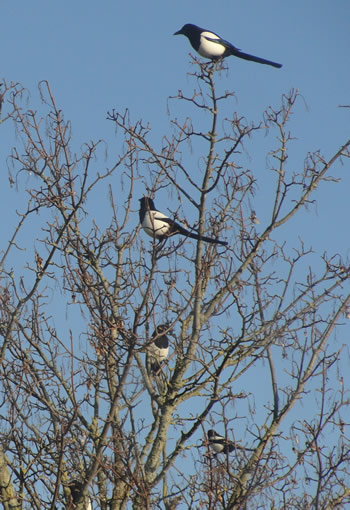 This time of year is one of the worst times to find road killed animals and as usual I came across a body of a badger, on taking it I noticed a large flea on its face. I rarely find fleas on badgers, usually lice and it had some of these (see a past post) I only found the single specimen.
This time of year is one of the worst times to find road killed animals and as usual I came across a body of a badger, on taking it I noticed a large flea on its face. I rarely find fleas on badgers, usually lice and it had some of these (see a past post) I only found the single specimen.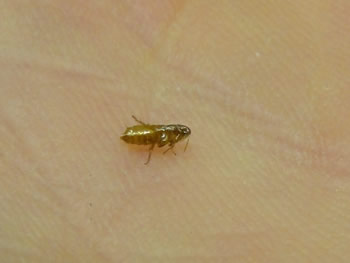 A road killed roe buck provided the ideal opportunity to look closely at its growing antlers, here is one that fell off and shows the red colour of the blood that fills the veins that provide it with minerals for growth ,and the velvet fur keeps them warm from the cold as these deer grow them during the winter time. The growing tip has broken off as one can see that it is still cartilage like and soft.
A road killed roe buck provided the ideal opportunity to look closely at its growing antlers, here is one that fell off and shows the red colour of the blood that fills the veins that provide it with minerals for growth ,and the velvet fur keeps them warm from the cold as these deer grow them during the winter time. The growing tip has broken off as one can see that it is still cartilage like and soft.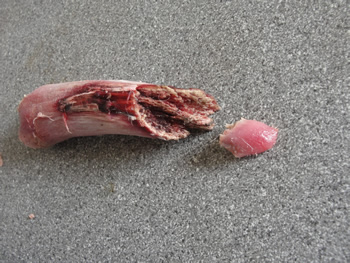 More road kill : this red tailed buzzard looks like a long legged buzzard (Buteo rufinus). I find many dead buzzards and among them are the odd individuals, mainly just colour variations of Buteo buteo: the common buzzard ,but at times different species or races can be found. There are so many buzzards in Britain now, and many people just assume that they are the common form, but a closer look at them may prove surprising . The long legged buzzard is a migrant and may move south west during cold winters from Europe. The Eastern form of the common buzzard also looks like the long legged so it can be very confusing. So I am none the wiser !
More road kill : this red tailed buzzard looks like a long legged buzzard (Buteo rufinus). I find many dead buzzards and among them are the odd individuals, mainly just colour variations of Buteo buteo: the common buzzard ,but at times different species or races can be found. There are so many buzzards in Britain now, and many people just assume that they are the common form, but a closer look at them may prove surprising . The long legged buzzard is a migrant and may move south west during cold winters from Europe. The Eastern form of the common buzzard also looks like the long legged so it can be very confusing. So I am none the wiser !